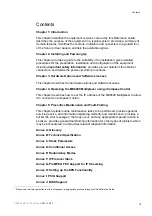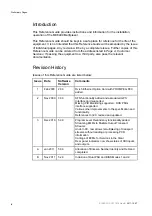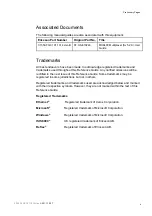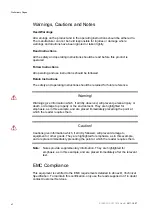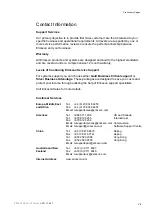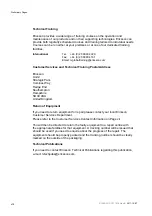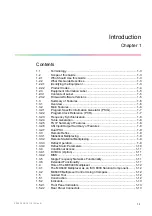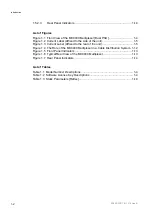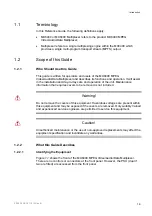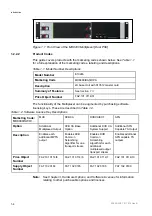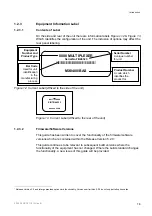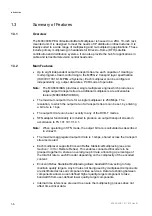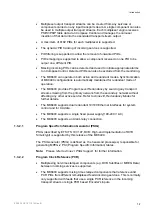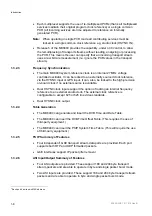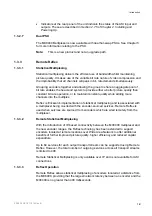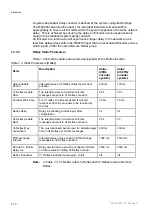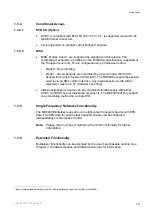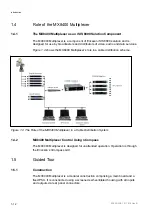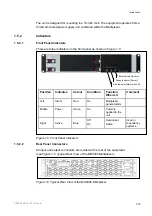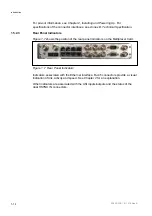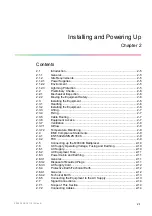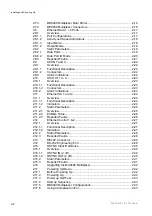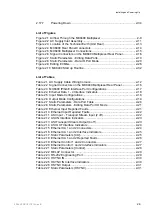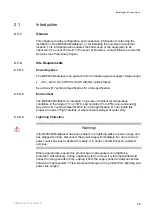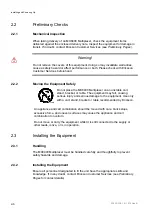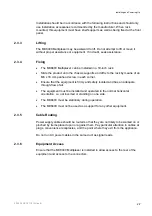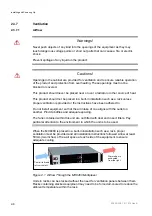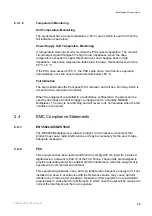
Introduction
•
Each multiplexer supports the use of re-multiplexed PCRs (that is all multiplexed
services maintain their original program clock reference) or a single common
PCR (all incoming services are time adjusted to reference an internally
generated PCR).
Note:
When operating in single PCR mode all contributing services must be
locked to a single common clock reference e.g. studio clock (HSYNC IN).
•
Release 5 of the MX8400 provides the capability, under nCC control, to allow
the remultiplexing of transport streams without reading, analyzing or processing
the PCR. This means the user can specify that an incoming transport stream
uses a raw bit rate measurement (i.e. ignore the PCR values in the transport
stream).
1.3.2.3
Frequency Synchronization
•
The main MX8400 system reference clock is an internal 27 MHz voltage
controlled oscillator. It can be locked to an externally sourced clock reference,
via the HYSNC input or GPS input. It can, also, be locked to the high-precision
on-board clock if no external source is available.
•
Dual HSYNC clock inputs support the option of locking an internal frequency
reference to an external studio clock. The external clock reference is
configurable to accept 625 or 525 line video standards.
•
Dual HYSNC clock output.
1.3.2.4
Table Generation
•
The MX8400 can generate and insert the DVB Time and Date Table.
•
The MX8400 can insert the DVB Time Offset Table. (This requires the use of
third-party equipment.)
•
The MX8400 can insert the PSIP System Time Table. (This will require the use
of third-party equipment.)
1.3.2.5
TS IP Summary of Features
•
Four
independent
GbE transport stream data ports are provided. Each port
supports both RTP and UDP formatted packets.
•
GbE interfaces support IP packet jitter removal
1.3.2.6
ASI Input/Output Summary of Features
•
Four ASI outputs are provided. These support 188 and 204 byte transport
stream packets and are able to operate in byte and single packet burst mode.
•
Two ASI inputs are provided. These support 188 and 204 byte transport stream
packets and are able to operate in byte and single packet burst mode.
2
Each port has its own MAC address.
2/1553-FGC 101 1014 Uen B
1-8
Summary of Contents for MX8400
Page 1: ...MX8400 Multiplexer Software Version 5 2 0 and later REFERENCE GUIDE 2 1553 FGC 101 1014 Uen B...
Page 26: ...Installing and Powering Up 2 1553 FGC 101 1014 Uen B 2 4 BLANK...
Page 94: ...Operating the Multiplexer using nCompass Control 2 1553 FGC 101 1014 Uen B 4 18 BLANK...
Page 96: ...Preventive Maintenance and Fault finding 2 1553 FGC 101 1014 Uen B 5 2 BLANK...
Page 146: ...Technical Specification 2 1553 FGC 101 1014 Uen B B 20 BLANK...
Page 148: ...Static Parameters 2 1553 FGC 101 1014 Uen B C 2 BLANK...
Page 186: ...Redundancy Modes 2 1553 FGC 101 1014 Uen B E 2 BLANK...
Page 192: ...IP Protocols 2 1553 FGC 101 1014 Uen B F 2 BLANK...
Page 196: ...IP Protocols 2 1553 FGC 101 1014 Uen B F 6 Figure F 3 Editing Stack Download Ports...
Page 198: ...ProMPEG FEC Support for IP Streaming 2 1553 FGC 101 1014 Uen B G 2 BLANK...
Page 204: ...Setting up the SFN Functionality 2 1553 FGC 101 1014 Uen B H 2 BLANK...
Page 212: ...Setting up the SFN Functionality 2 1553 FGC 101 1014 Uen B H 10 BLANK...
Page 214: ...PSIG Support 2 1553 FGC 101 1014 Uen B I 2 BLANK...
Page 220: ...BISS Support 2 1553 FGC 101 1014 Uen B J 2 BLANK...


